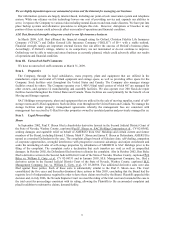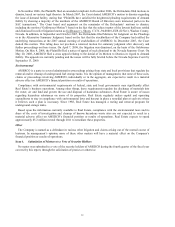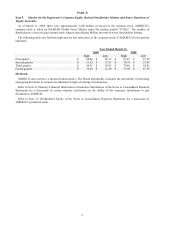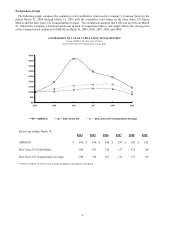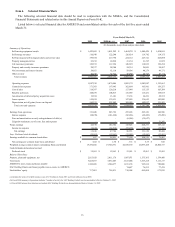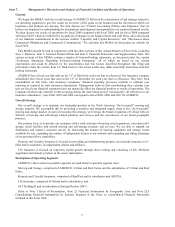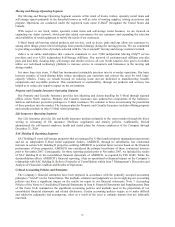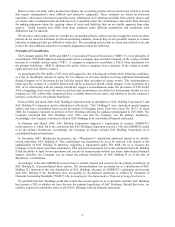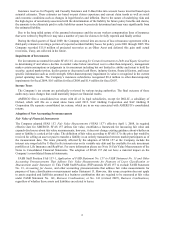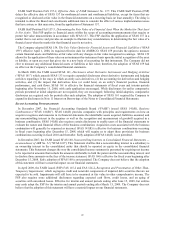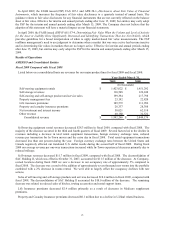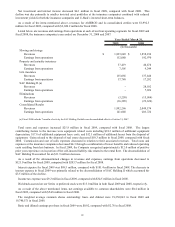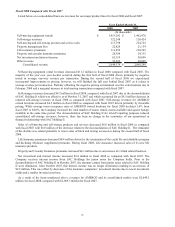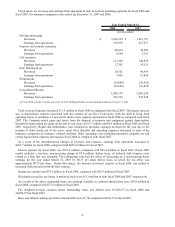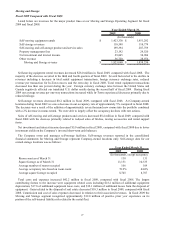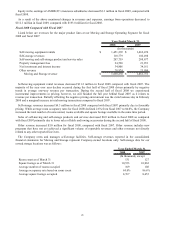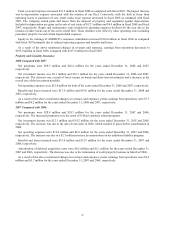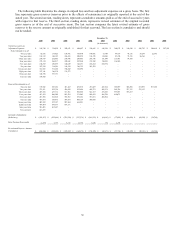U-Haul 2009 Annual Report Download - page 25
Download and view the complete annual report
Please find page 25 of the 2009 U-Haul annual report below. You can navigate through the pages in the report by either clicking on the pages listed below, or by using the keyword search tool below to find specific information within the annual report. 21
Insurance reserves for Property and Casualty Insurance and U-Haul take into account losses incurred based upon
actuarial estimates. These estimates are based on past claims experience and current claim trends as well as social
and economic conditions such as changes in legal theories and inflation. Due to the nature of underlying risks and
the high degree of uncertainty associated with the determination of the liability for future policy benefits and claims,
the amounts to be ultimately paid to settle liabilities cannot be precisely determined and may vary significantly from
the estimated liability.
Due to the long tailed nature of the assumed reinsurance and the excess workers compensation lines of insurance
that were written by RepWest it may take a number of years for claims to be fully reported and finally settled.
During the third quarter of fiscal 2009, the Company entered into an excess of loss reinsurance agreement with a
third-party reinsurer covering a portion of expected accident liability losses for policy years 2001 through 2005. The
Company recorded $15.0 million of projected recoveries as an Other Asset and deferred this gain until actual
recoveries, if any, are collected in the future.
Impairment of Investments
For investments accounted for under SFAS 115, Accounting for Certain Investments in Debt and Equity Securities
in determining if and when a decline in market value below amortized cost is other-than-temporary, management
makes certain assumptions or judgments in its assessment including but not limited to: ability and intent to hold the
security, quoted market prices, dealer quotes or discounted cash flows, industry factors, financial factors, and issuer
specific information such as credit strength. Other-than-temporary impairment in value is recognized in the current
period operating results. The Company’s insurance subsidiaries recognized $0.4 million in other-than-temporary
impairments for fiscal 2009, $0.5 million for fiscal 2008 and $1.4 million for fiscal 2007.
Income Taxes
The Company’s tax returns are periodically reviewed by various taxing authorities. The final outcome of these
audits may cause changes that could materially impact our financial results.
AMERCO files a consolidated tax return with all of its legal subsidiaries, except for DGLIC, a subsidiary of
Oxford, which will file on a stand alone basis until 2012. SAC Holding Corporation and SAC Holding II
Corporation file separate consolidated tax returns, which are in no way associated with AMERCO’s consolidated
returns.
Adoption of New Accounting Pronouncements
Fair Value of Financial Instruments
The Company adopted SFAS 157, Fair Value Measurements (“SFAS 157”) effective April 1, 2008, its required
effective date for AMERCO. SFAS 157 defines fair value, establishes a framework for measuring fair value and
expands disclosures about fair value measurements; however, it does not change existing guidance about whether an
asset or liability is carried at fair value. The definition of fair value according to SFAS 157 is the price that would be
received for selling an asset or paid to transfer a liability in an orderly transaction between market participants as of
the measurement date. The items primarily affected by the adoption of SFAS 157 at the Company include the
interest rate swaps held by U-Haul to fix interest rates on its variable rate debt and the available for sale investment
portfolios at Life Insurance and RepWest. For more information please see Note 16 Fair Value Measurements of the
Notes to Consolidated Financial Statements. The adoption of SFAS 157 did not have a material impact on the
Company’s consolidated financial statements.
FASB Staff Position FAS 157-1, Application of FASB Statement No. 157 to FASB Statement No. 13 and Other
Accounting Pronouncements That Address Fair Value Measurements for Purposes of Lease Classification or
Measurement under Statement 13. This FASB Staff Position (FSP) amends SFAS 157 to exclude FASB Statement
No. 13, Accounting for Leases, and other accounting pronouncements that address fair value measurements for
purposes of lease classification or measurement under Statement 13. However, this scope exception does not apply
to assets acquired and liabilities assumed in a business combination that are required to be measured at fair value
under FASB Statement No. 141, Business Combinations, or No. 141 (revised 2007), Business Combinations,
regardless of whether those assets and liabilities are related to leases.


